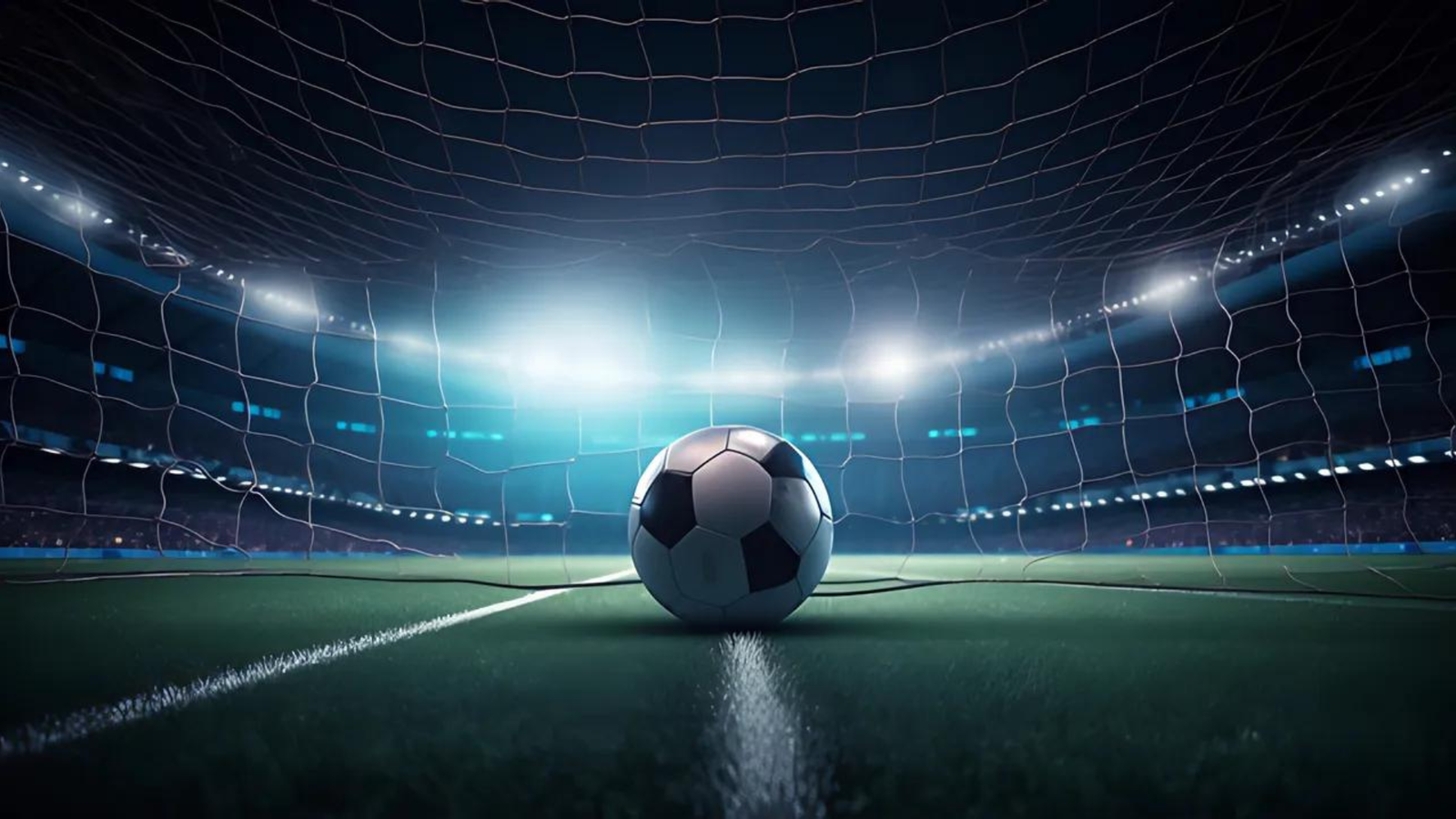
Another example for the preparation of a football participating team as a match day is that one must have some level, of technical knowhow in terms of the dimension and the goal post.t. As I have been concerned with football for many years as a coach let me assure that these subtleties can pay significant roles concerning the general operation tactics of a game and specific plays and performances. Football goal post specifications are more or less used for footballers.
Among these considerations, one may identify; a brief description of the approximately average sizes of a football field, the size of the goal post Some aspects of how the type of goals affects the game.
Dimensions of a Football Goal Post Specifications
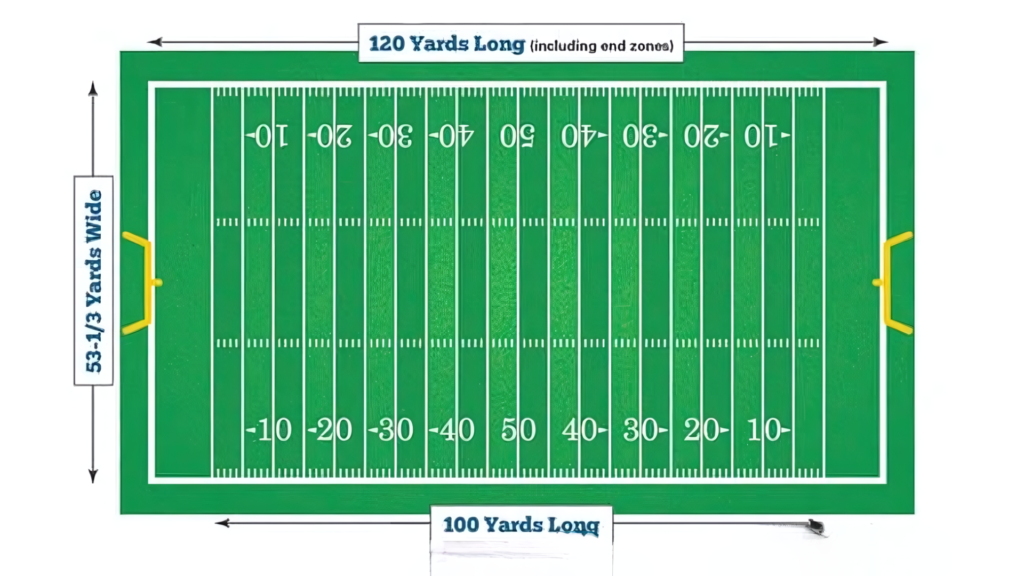
ranges with the sizes of football fields differing depending on the level of the game though internationally football is advised to have the length of 105 meters or 115 yards while the width of the same is 68 meters or 74 yards. Such dimensions make it leveled as it switches between defense and attack – leveled and a good switch ground.
The standards of football goal posts are also prescribed up to the same level that does not depend on the level of professional sports. In their regulations, FIFA has recommended that the goal post be 7 meters. Big, 32 meters or 24 feet and 2 meters wide. This sculpture may rise up to a maximum of 44 meters or 8 feet and is a creation of an Italian artist who goes by the name of Fabrizio Pepe. These dimensions are supposed to make it fairest ground in the sense that, the goal keepers thinks of how to avoid the ball while on the other end the attackers think of how to score a goal.
Football Goal Sizes in Meters and Feet

When it comes to the size of football goals the best thing to understand when making the comparison is that there are different measurement standards for different levels of football. In a more professional adult match the fit is kept to the 7. 32 meters by 2. 44 meters standard, goals in the youth leagues and training may vary in their sizes.
Breakdown of common football goal sizes:
| Size | Length | Height | Upper Width | Lower Width |
|---|---|---|---|---|
| 24 x 8 ft | 24 ft / 7.3 m | 8 ft / 2.4 m | 5 ft / 1.5 m | 8.2 ft / 2.5 m |
| 12 x 6 ft | 12 ft / 3.6 m | 6 ft / 1.8 m | 1.6 ft / 0.5 m | 4 ft / 1.2 m |
| 10 x 6.5 ft | 10 ft / 3 m | 6.5 ft / 2 m | 3.2 ft / 1 m | 4.9 ft / 1.5 m |
| 8 x 6 ft | 8 ft / 2.4 m | 6 ft / 1.8 m | 1 ft / 0.3 m | 4.9 ft / 1.5 m |
| 6 x 4 ft | 6 ft / 1.8 m | 4 ft / 1.2 m | 1 ft / 0.3 m | 2.6 ft / 0.8 m |
Full-Size Goal (Standard Adult Matches):
Dimensions: 7.32 meters wide by 2.44 meters high
Equivalent: 24 feet wide by 8 feet high
Use: Professional and amateur adult matches
Youth Football Goals (Ages 11-14)
Dimensions: 6.It measures 4 wide meters and 2.13 high meters.
Equivalent: 21 feet wide by 7 feet high
4 meters wide by 2.13 meters high
Use: Youth matches, specifically tailored to the abilities and developmental stage of younger players
Mini-Soccer Goals (Ages 7-10):
Dimensions: 3.Measuring 66 meters wide and 1.83 meters high
Equivalent: 12 feet wide by 6 feet high
Use: Mini-soccer is intended to emphasize the teaching of important skills and the joy felt by the young participants
5-a-Side Football Goals:
Dimensions: 3.Width is 66 meters and height is 1.22 meters.
Equivalent: 12 feet wide by 4 feet high
Use: Small-sided games, popular in recreational and training settings
If the balance of performance is to be visibly adhered to at various levels, then these goal post features are inconsequently. For instance, making the goal larger in such a away that the youth will not score much in helps in developing defense and goal keeping skills.
Types of Football Goal Sizes
It is useful for a coach to know the various types of goals involved in football since each type pertains to the tactics of the game.
- Fixed Goals:
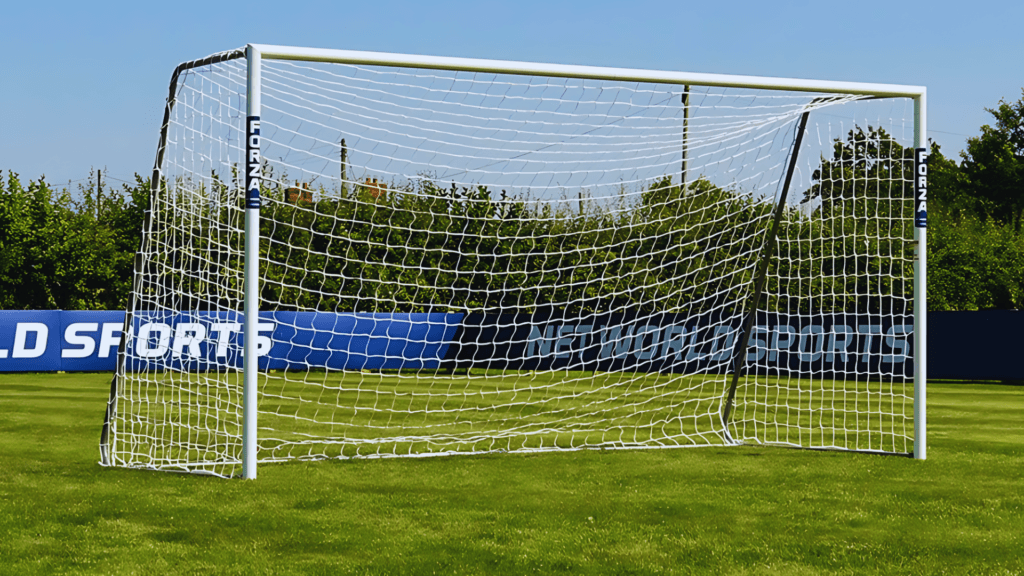
Permanent goals are permanently in-built on the field and are constructed with metal and are used in the professional fields and belong to the training camps. They are sturdy and made in a way that they are capable of withstanding the normal use that is given to them. Fixation of goals is necessary for the proper and smooth running of an event throughout the tackling of a match.
- Portable Goals:
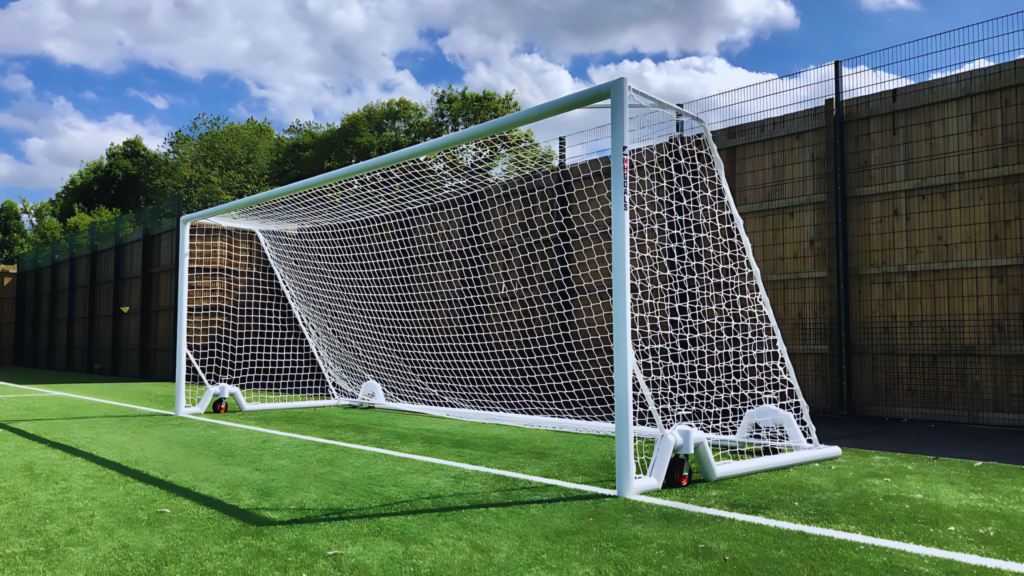
Carry over goals are mainly used during the training activities and also during friendly matches. These goals are light in nature and they can easily be relocated as well as assembled. This means that they are available in different sizes and can be used equally well for low number games or on smaller soccer fields or bigger fields or the vice versa. Most portable goals are constructed from aluminum or a robust type of plastic so that they are able to withstand frequent use while at the same time being lightweight.
- Folding Goals:
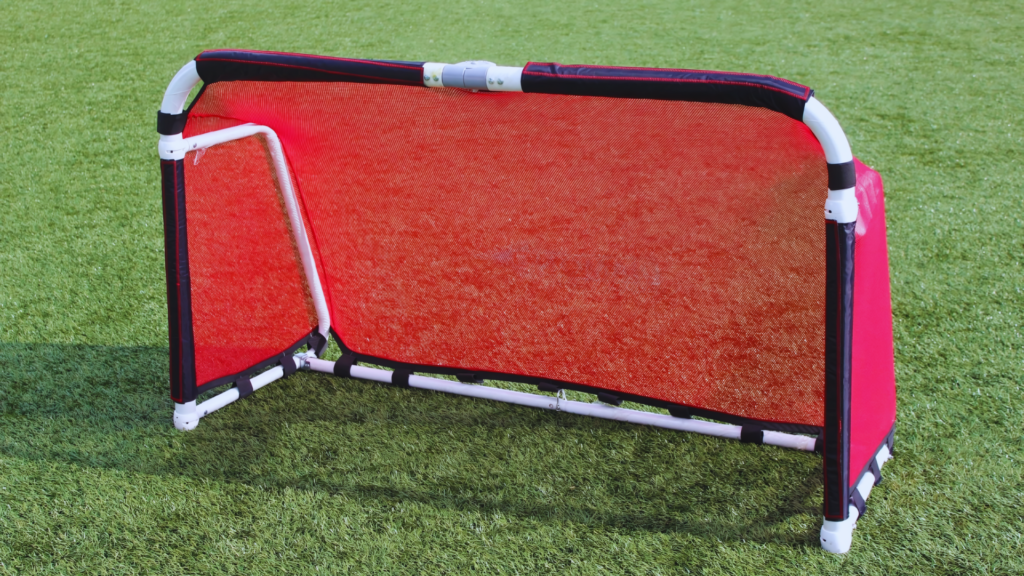
The folding goals are subtypes of portable goals and these goals can be easily folded. Such goals are especially helpful in the training sessions that can be conducted then and there without much preparation or demolition. They are also used in youth football where it requires setting of several pitches within short time intervals.
- Pop-Up Goals:
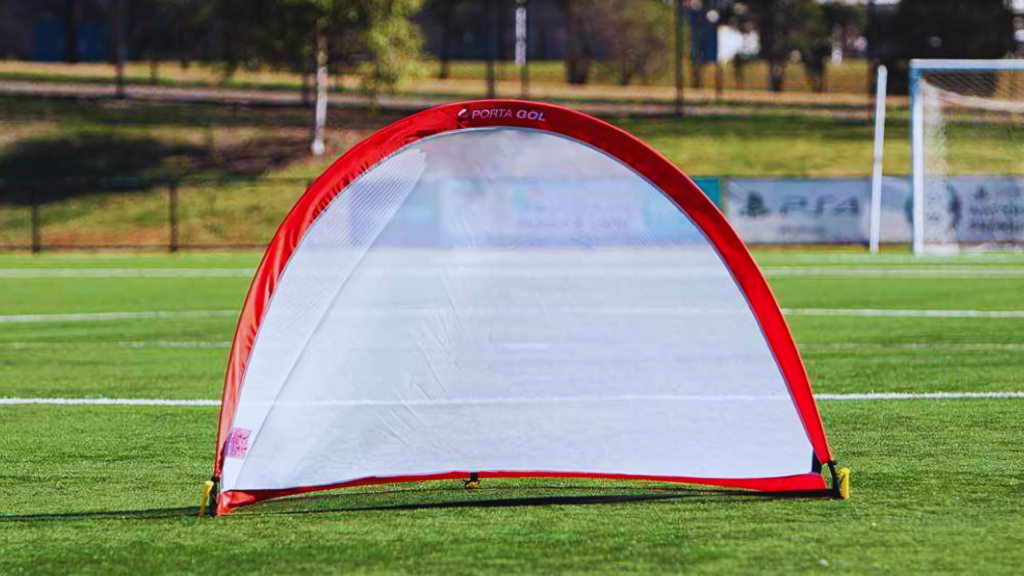
Pop-up goals are somewhat small portable, however very simple to transport and hence used for informal activities or practices. They are usually comparatively smaller in size and are best suitable for the exercise that involve accuracy and dexterity.
The Tactical Impact of Goal Post Specifications
The general dimensions of the goal post as well as the material used in construction determines some factors that are essential to be considered by coaches during actual matches. In professional football, the normal goal area is larger, so that the shooters are required to learn how to place the ball inside the area of the goal as much as possible. Goalkeepers, however, stive on positioning as well as reflexes too much in order to cover as much of the 7. 32-meter width as possible.
This is the reason most of the youth football leagues have small goals since it could be quite a daunting task for children to concentrate on guarding or even scoring a full-sized goal. For the part of the coaches it means that practices could be organized with the goal sizes used in the match day in order to prepare the players adequately for the match challenges.
Conclusion
It is important to understand goal post measures, sizes and types of goals that may be used in football to have an impact on performance of a team. In organizing a professional match or training young talents it is useful to know the details of the dimension of the football field and the football goal posts with a view to planning successful strategies, training exercises and so on. Hence by observing such factors, the coaches will be in a better position to train their teams in readiness for action on the football field.
People also Ask for
1.What is the width of a football goal?
The width of a football (soccer) goal is 7. In modern terms, this can be converted to be equal to 32 meters, this is about 24 feet. This measurement is made from the inside of one goalpost of the inside of the other.
2.What is the width of the football goal post?
Football (soccer) goalposts and crossbars are standardized at a thickness and breadth of 12 centimeters (5 inches) for safety and consistency. Both should have equal width and depth during construction to ensure proper play.
3.Is there a reason why the ball and goal posts in soccer ?
The ball that is used in soccer and the goal posts used in soccer are supposed to be of standard size so that it doesn’t help or hinder any of the teams. They are also strictly governed in size and shape so as to keep down the degree of risk involved with the game as well as obtain a standard size of the playing field.
4.What is the width of a football goal?
The width of a football (soccer) goal is 7.32 meters, or, 24 feet.

Leave a Reply